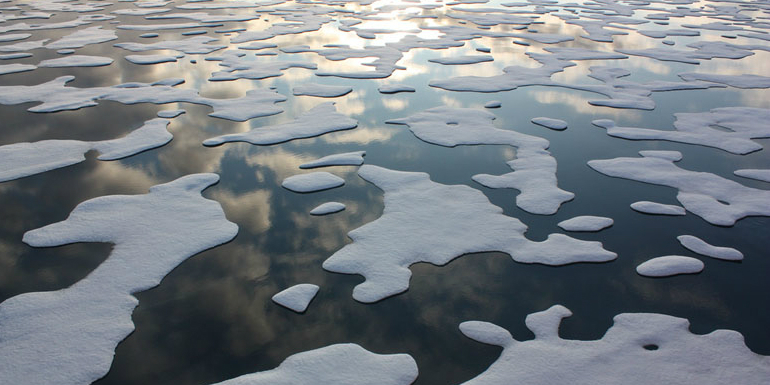Here’s how much of the Arctic you’re personally responsible for melting
Dirk Notz calculates that for every person who drives a car 1,000 miles or takes a round-trip flight from New York to London, three square meters (about 32 square feet) of sea ice vanishes from the Arctic.
Researchers have long documented that human-fueled carbon dioxide emissions contribute to the overall warming of the planet – and, by extension, accelerate the diminishing of sea ice in the Arctic each year. But in a paper published Thursday in the journal Science, Notz and a colleague detail the complex set of calculations that allowed them to estimate how much Arctic sea ice melts for every metric ton of carbon dioxide emitted into the atmosphere.
Their answer? About three square meters.

The result, if accurate, helps illustrate how individual actions shape what often can seem a faraway problem. The average American, for instance, emits more than 16 metric tons of carbon each year, according to the World Bank. That would amount to the melting of about 48 square meters of ice in the Arctic, or about enough to cover the floor plan of a 500-square-foot apartment.
[Arctic sea ice hits second-lowest extent in satellite record]
“This makes it possible to intuitively grasp how we all contribute to global warming,” said Notz, a climate scientist at the Max Planck Institute for Meteorology in Germany, who co-wrote the paper with Julienne Stroeve, a senior research scientist with the National Snow and Ice Data Center in Colorado. “It’s really possible to translate how individual actions contribute to sea-ice loss.”
The researchers also argue that the linear relationship between carbon dioxide emissions and the amount of ice melting might serve as a good predictor of when the Arctic will be completely free of ice during September, the lowest month each year for Arctic sea ice, a development many scientists expect to happen over the next several decades, possibly even by 2030. Sea ice extent in the Arctic measured as low as it has ever has in late October, and air surface temperatures have shown record warmth. It is difficult to project what the current ice depletion means for next year, but there is an unmistakable, long-term trend toward less ice in the Arctic.
Notz and Stroeve suggest that it might be less a question of timing and more a question of how much CO2 the world emits. At the current rate of emissions, the Arctic could be free of ice during the late summer by the middle of this century. “On the other hand, our results also imply that any measure taken to mitigate CO2 emissions will directly slow down the ongoing loss of Arctic summer sea ice,” the authors write.
Why does the increased melting of Arctic sea ice matter?
“When you’re changing the Arctic, you certainly expect to have ramifications outside the Arctic,” said Walt Meier, a sea-ice scientist at NASA Goddard Space Flight Center. “The climate system is interconnected. The Arctic is not like Las Vegas. What happens in the Arctic doesn’t necessarily stay in the Arctic.”
Some studies have suggested that the loss of sea ice in the Arctic could be weakening the jet stream and thus contributing to floods, droughts and other extreme weather events that have struck the mid-latitudes in recent years. Although the jury remains out on the precise scientific links, many scientists believe the accelerated loss of Arctic sea ice could be contributing to longer winters in North America, as well as more intense heat waves.
There’s no doubt that the loss of sea ice also will profoundly alter the Arctic itself. Polar bears, seals and other wildlife will have to wrestle with the changing landscape. Native communities might have to change how and when they hunt and fish, and villages could become more vulnerable to storms and erosion. Oil and gas exploration would become easier in an ice-free Arctic, and shipping would become more feasible (already, a luxury cruise sailed through the Arctic this summer).
“There will be winners and losers,” Meier said. “It depends what your interests are on whether it’s a good thing or a bad thing.”
Meier said the idea behind Thursday’s study – to detail individual contributions to sea-ice loss – might oversimplify the issue, given the twisting scientific road between someone’s tailpipe and a melting sliver of the Arctic. But he said it provides a powerful way to visualize how each of us plays a role in a problem that might seem far away but ultimately isn’t.
Read more:
Barrow posts record-warm October, continuing pattern associated with low sea ice
Arctic sea ice hits second-lowest extent in satellite record
The first Arctic-wide look at polar bears’ sea ice habitat finds conditions worsening everywhere